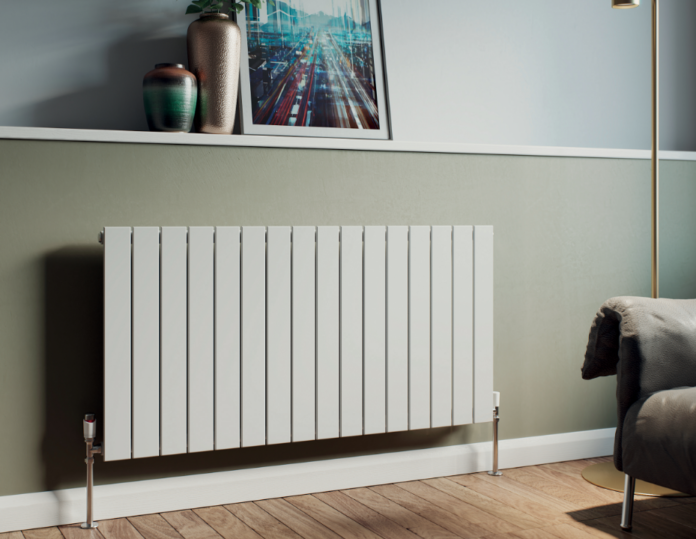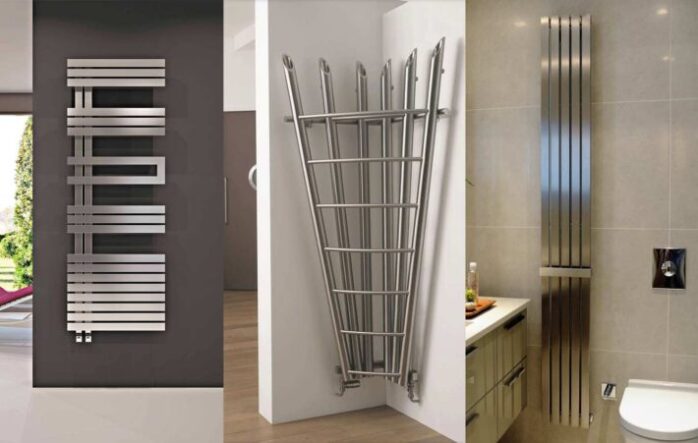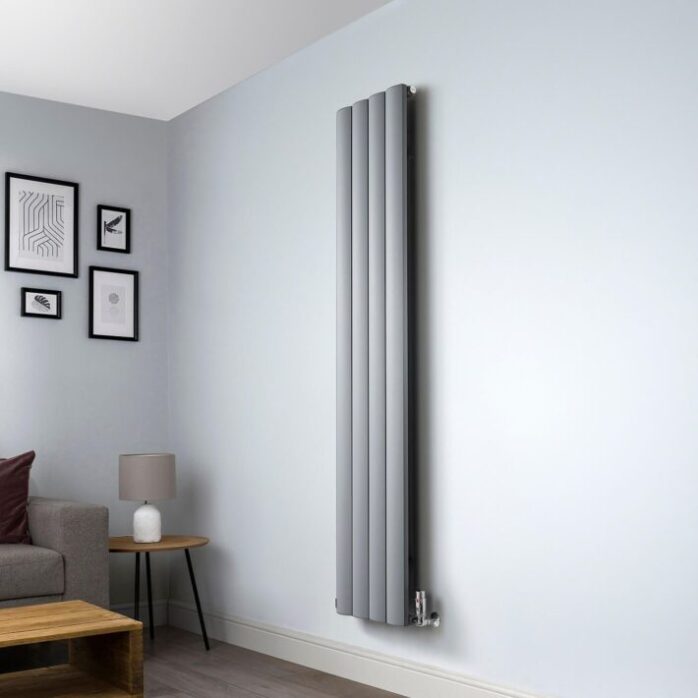
Every room needs a good radiator, but not all of us are good radiator shoppers. It’s the kind of thing the average person would only shop for less than a handful of times in their life. It isn’t something we should all be expected to be experts on, but is something that can be overwhelming, especially if you are thinking of buying a designer radiator.
Designer radiators used to be few and far between, but as people want their homes to feel more unique and special, designer radiators are growing in popularity. I’m not merely talking about a fancy rail in the bathroom, but flat-panel aluminum radiators, chrome polished column radiators, anthracite grey vertical radiators etc., that help add something special.
Shopping for designer radiators can be tricky, especially these days when you have to shop for everything online. Besides knowing your pipe centers from wall projections and what type of valve entry your radiators have, what should someone buying a designer radiator be looking for? Are there specific materials that make these radiators better? Will the colour or finish matter? And why exactly would someone pay more for a radiator? Let’s look at all these and more as we delve into the world of designer radiators.
Materials are usually different

The material a radiator is made from is not typically something you or I would stop to think about; after all, all anyone cares about is having a radiator that works. And while a good old steel radiator is still the most common you can get, designer brands will sometimes opt for higher quality materials when making their radiators.
Namely, there are two materials that are often a sign you’re looking at a designer radiator: stainless steel & aluminum. Why would designer brands choose these? Firstly, let’s look at stainless steel. Just like some fancy cutlery, stainless steel has a higher level of chromium to help prevent rusting. You might often hear that stainless steel is heat-resistant, but it also has a tremendous degree of heat density. This allows your radiator to stay warmer for longer when heating is turned off. Most designer radiators can’t just look good; they have to work the part too.
That brings us to aluminium, which is seen as the optimal choice for designer brands. It won’t have the same level of heat density as steel or even cast-iron, but it is highly conductive and easy to shape. That means you can have a fast-acting radiator which heats a space in record time and will do so until it is turned off again. The flexibility of shape during formation also means designers can create thinner rails and ornate designs without worrying about performance. If you are interested in aluminum designer radiators, you can visit UK Radiators and explore their wide range.
Finishes are a different quality

Radiator finishes are such an odd thing. It is one of the only times when we pick colours like silver and chrome to actively pretend that it is what a radiator is made from. You can always give it a go yourself and try to paint a radiator, so it has a new lease of life. Still, you’ll be hard-pressed to match a professional paint job on a radiator.
I always tell anyone shopping around to take a good look at the finish around the entries of a radiator. Most radiators these days are spray-painted because it is faster for the manufacturer and paint can sit without the sign of brush strokes. A good way to tell if you’re looking at a genuine radiator is to check for signs of brush marks and strokes on those entries, as it is the one area a painter may have to use a brush. If they are too heavy and don’t blend, you can tell that care hasn’t been taken on those small parts of the build. By the way, if you are in the middle of redecorating a room at home with a fresh lick of paint, this recent article on colour and mood in rooms is worth reading.
There are certain brands to look out for

Where in the world do you think the best radiator brands are from? Your instinct might be to go to colder countries, where people obviously need it more. Or is it just a case of American engineering pioneering the way? While America was once the mecca of manufacturing in the late 1800s when cast iron radiators rose to prominence, you have to look at one country in Europe to find designer radiators these days.
Italy is where some of the top names are. If you see the likes of Antrax, Delonghi, Faral & Ridea in a store, you’re looking at a respectable Italian name. I like to think that this upsurge in interest from Italian brands comes from their knowledge of coffee/espresso machines, where you’re looking at all kinds of way to optimise hot water running through an internal system. And if you are interested in looking at some Italian designer radiators, I recommend visiting Trade Radiators.
You’re paying a premium for longevity

Going back a little to what I said about materials and finish. It is true that two similar radiators, one cheap and one designer, may have the same heat output when first installed on a wall, but it is a bit of a long game when it comes to performance. On average, a traditional radiator you’ll find in a DIY store will typically work with no problems for up to 10 years. After that, you may find that the radiator becomes less efficient or starts showing minor issues.
Because designer radiators are made by brands with a reputation to uphold, you would tend to find that a designer radiator will work for anywhere from 10 to 15 years before you have any major issues. I recommend looking for information like this when shopping around and asking suppliers if they know themselves whether a particular brand will have any long-term problems.
In the middle of making changes at home?
I hope this article has helped you see the where and why of designer radiators. If you are planning some renovations or DIY work, please check the latest home articles on the site, with guides on topics like moving home, painting outside, and energy efficiency.











